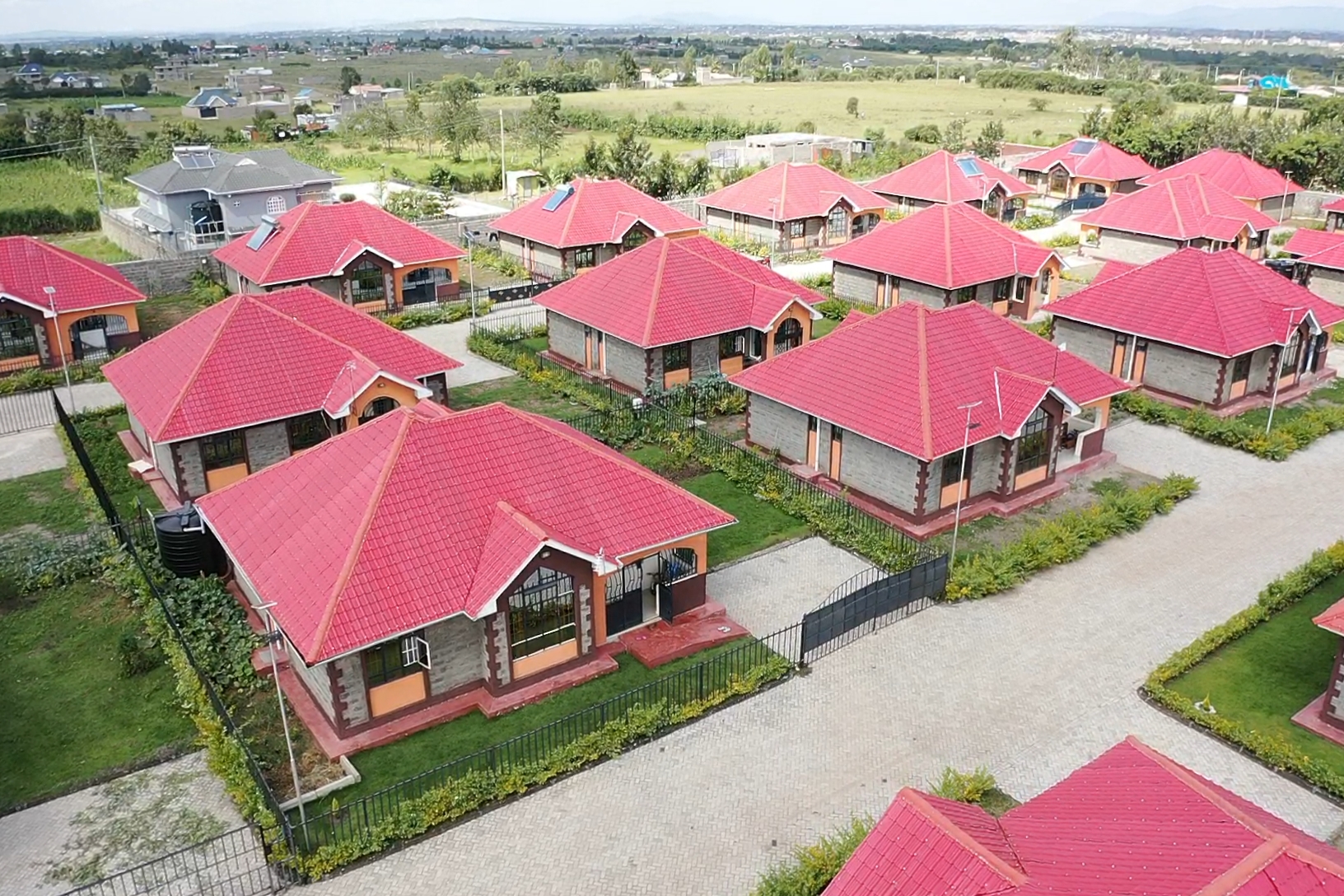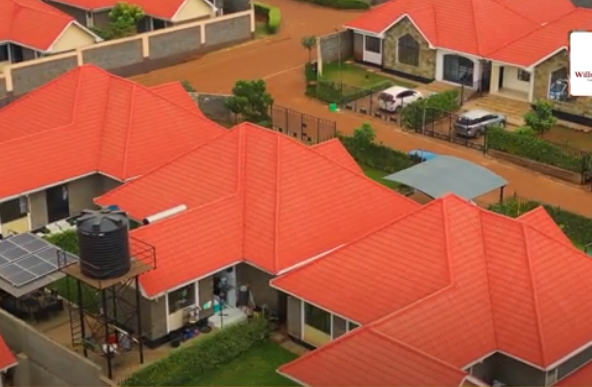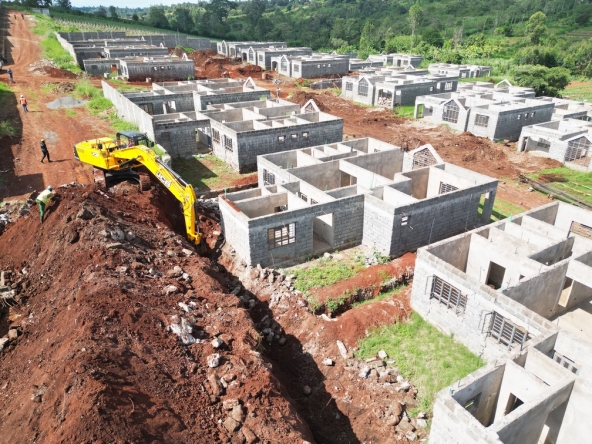A Silent Demographic Awakening
Kenya’s real estate sector is undergoing a subtle but significant shift. Amid the usual buzz about first-time homeowners, luxury estates, and affordable housing, a quieter market segment is emerging: retirement communities in Kiambu and Limuru. These purpose-built estates, designed for people aged 50 and above, are redefining what it means to age with dignity in modern Kenya.
As Kenya’s urban middle class grows older and life expectancy rises, this demographic — once underserved — is demanding more than just medical care. They seek peaceful living environments, security, companionship, and access to wellness services. Developers in peri-urban regions like Kiambu and Limuru are starting to take notice.
Kenya’s Aging Population: A Growing Market
According to the Kenya National Bureau of Statistics (KNBS), Kenya had approximately 2.9 million people aged 60 and above in 2022, representing 5.7% of the population. That figure is projected to double by 2050, based on United Nations Population Division estimates.
More notably, the fastest-growing segment is between 50 and 65 years — a group of aging professionals, mostly urban, who are not yet frail but are increasingly planning for a quieter, more manageable lifestyle post-retirement.
In addition:
- The average life expectancy in Kenya has increased to 67.5 years as of 2023 (World Bank).
- The urban middle class, a significant proportion of whom are civil servants, NGO professionals, and private sector retirees, are actively seeking housing options that offer comfort, independence, and proximity to services.
- According to a 2021 study by HelpAge International, more than 68% of older adults in Kenya prefer independent living arrangements to multigenerational households if affordability and healthcare access are assured.
Read Also: Data Privacy in Nairobi Smart Apartments: A New Age of Security or Silent Intrusion?
Why Kiambu and Limuru?
1. Climate and Topography
Kiambu and Limuru offer cooler temperatures, cleaner air, and scenic green landscapes — ideal for those seeking relief from Nairobi’s congestion and heat. With average altitudes above 2,000 meters and lush vegetation, these towns provide the serenity associated with rural life, without losing connection to urban centers.
2. Proximity to Nairobi
Located less than 40km from the capital, Kiambu and Limuru allow older adults to remain close to their families, social networks, and familiar institutions. With upgraded infrastructure such as the Western Bypass and the expanding James Gichuru–Rironi highway, travel time to Nairobi CBD or Westlands has drastically reduced, making weekly or even daily commutes feasible.
3. Security and Space
Compared to inner-city estates, the peri-urban layout of Kiambu and Limuru allows for low-density developments. This is especially appealing to seniors who prioritize space, greenery, and quiet. Moreover, crime rates in these areas remain relatively lower, and many developments now incorporate 24/7 security with controlled access points — a top priority for older buyers.
Read Also: Chamas to Skyscrapers: How Women Investment Groups Are Shaping Nairobi’s Mid-Tier Housing Market
The Key Features of Modern Retirement Communities
Unlike conventional apartments or gated communities, senior-focused developments in Kenya are increasingly being designed with age-friendly features, including:
Universal Design
- No-step entries, wider doorways, and wheelchair-accessible paths.
- Anti-slip flooring and handrails in bathrooms.
- Emergency call buttons in living spaces and bedrooms.
Integrated Healthcare Support
- Access to 24-hour on-call medical professionals.
- In-house clinics for routine check-ups and minor treatments.
- Partnerships with nearby hospitals for emergency care and home visits.
Wellness and Lifestyle Amenities
- Communal gardens for light physical activity and therapy.
- Spaces for yoga, guided meditation, or group fitness classes tailored for over-50s.
- Nutrition support and wellness workshops focused on age-related conditions like diabetes, arthritis, and hypertension.
Social Engagement Infrastructure
- Community halls for group meetings, movie nights, or religious services.
- Activity coordinators to organize events that encourage interaction and mental stimulation.
- Programs that support lifelong learning, crafts, and skills exchange.
These features reflect a broader global trend known as “aging-in-place” design, which emphasizes dignity, autonomy, and proactive health rather than dependency.
A Missed Segment in Kenya’s Housing Policy
Despite the growing demand, Kenya’s housing policy frameworks have historically overlooked the elderly. Initiatives like the Affordable Housing Programme (AHP) have focused primarily on the youth and first-time buyers.
There is little dedicated regulation or incentive structure aimed at stimulating investment in senior-specific housing. Yet, as Kenya’s older population expands, this oversight could pose future social and urban planning challenges.
In contrast, countries like South Africa have developed state-private partnership frameworks to encourage the development of retirement villages, complete with zoning, tax relief, and regulatory protection. Kenya is yet to reach that point — though the National Housing Corporation (NHC) has hinted at integrating elderly-focused units into future plans.
Read Also: Sanitation Infrastructure Nairobi Estates: Impact on Property Values
Economic Potential and Return on Investment
Globally, senior housing is one of the fastest-growing real estate investment classes. In Kenya, the financial case is equally strong:
- Occupancy rates in age-targeted housing tend to be higher than in standard rentals due to long-term tenures and lower tenant turnover.
- Healthcare integration adds value to property pricing and attracts diaspora Kenyans who want their aging parents close to quality care.
- According to a 2023 study by Cytonn Investments, niche developments for retirees and over-50s can earn yields of 8–10% annually, higher than the national residential average of 5.6%.
This has drawn the interest of pension schemes, cooperatives, and even church-backed investment groups — many of which are exploring retirement communities as part of broader real estate portfolios.
The Cultural Shift: From Stigma to Independence
Historically, sending one’s parents to a “retirement home” in Kenya was seen as abandonment. However, the narrative is shifting — particularly in urban, professional families where dual-income households and space constraints make elder care challenging.
Many over-50s are themselves initiating the move — purchasing units in senior-friendly communities while still active, with the intention of aging in place with minimal disruption.
A 2021 survey by Kenya Human Rights Commission found that 58% of urban adults over 50 would prefer independent living with access to medical care over living with extended family, citing personal space, safety, and lifestyle choice as key motivators.
A Future Kenya Must Prepare For
The emergence of retirement communities in Kiambu and Limuru signals a necessary shift in how Kenya thinks about aging, housing, and independence. These “silent estates” — designed with calm, care, and community in mind — offer a dignified answer to the question of where and how urban professionals want to spend their later years.
As demand grows, the government, developers, and financial institutions must proactively support this housing class — through policy, finance, and public awareness — to ensure Kenya’s elderly are not an afterthought in the urban conversation.
Aging is inevitable. Dignified, well-planned aging — in purpose-built communities surrounded by care, green spaces, and respect — is the choice we must make now.
Read Also: Smart Estate Security in Nairobi: Blending Tech and Guards in Gated Communities




